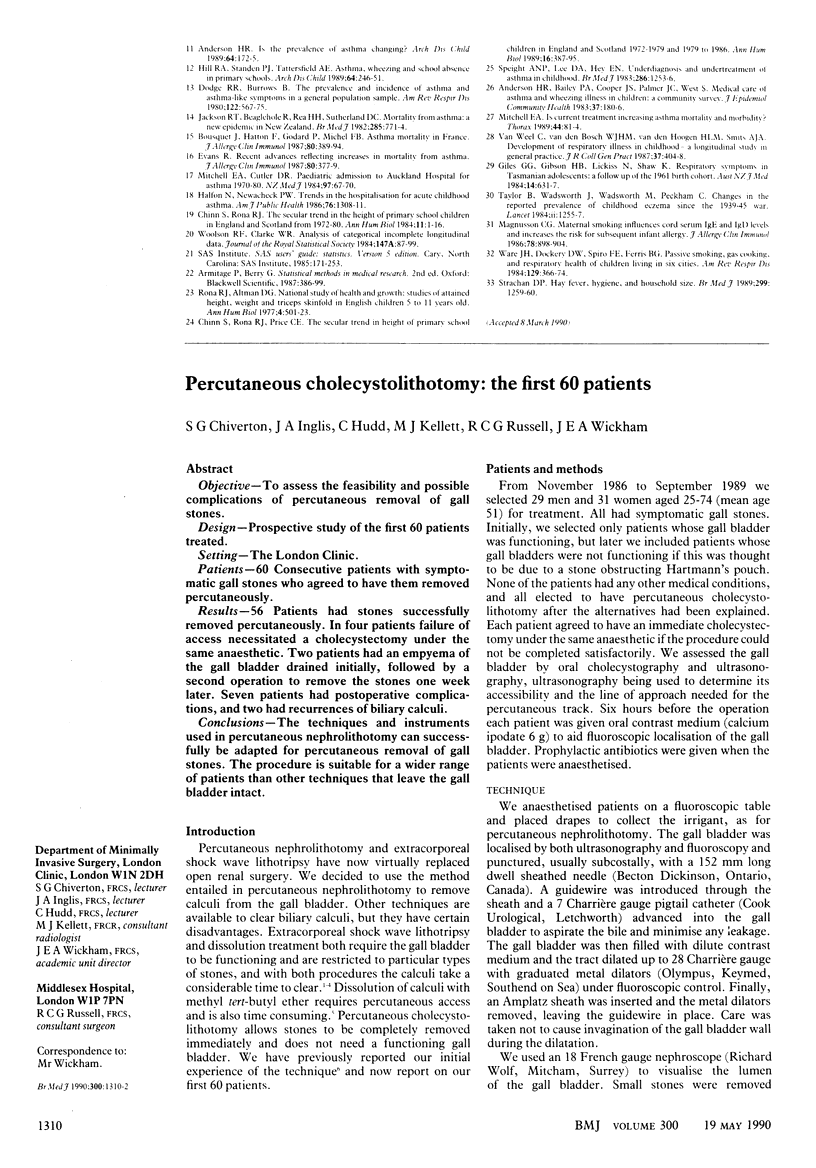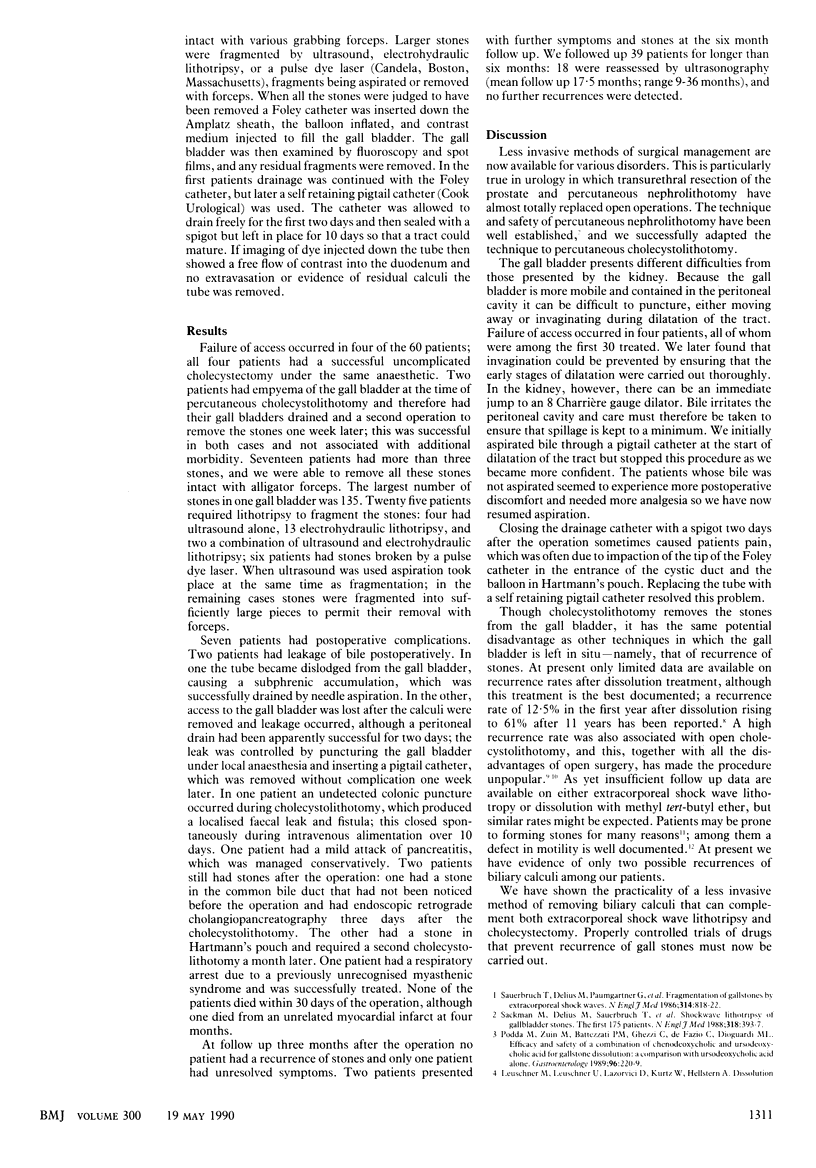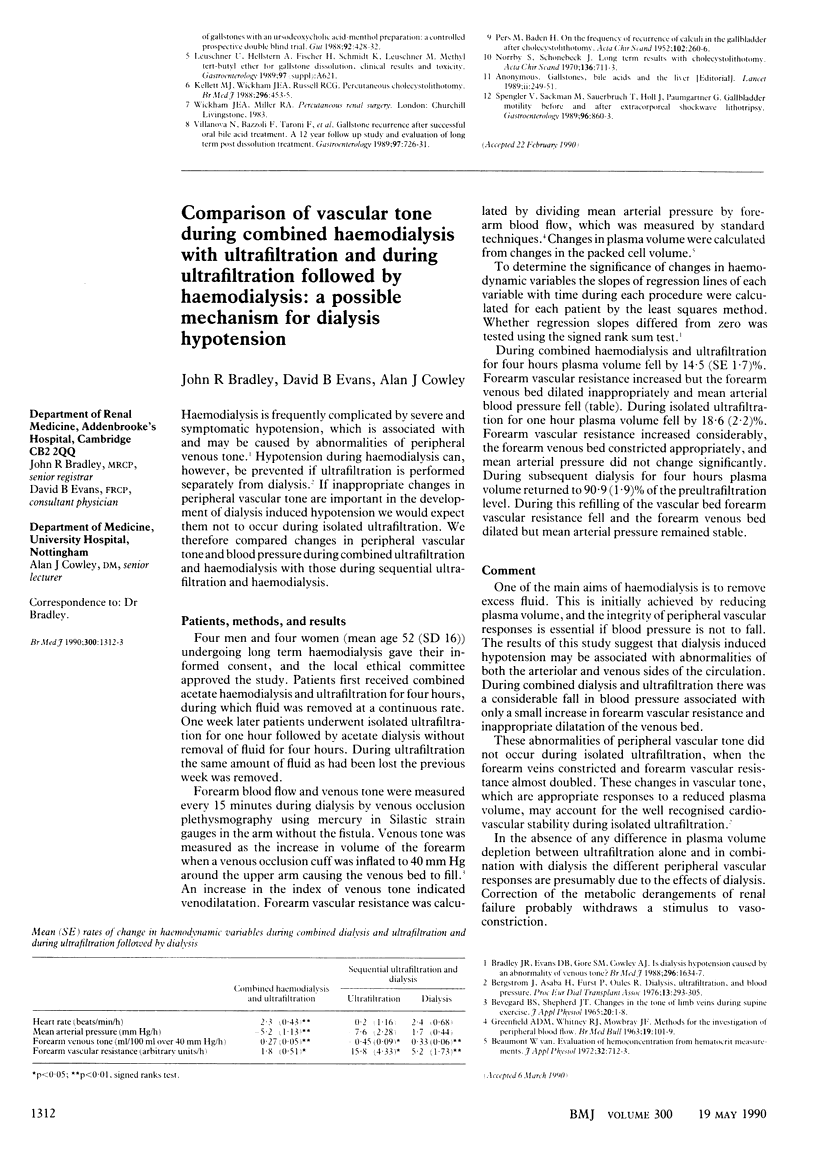Abstract
OBJECTIVE--To assess the feasibility and possible complications of percutaneous removal of gall stones. DESIGN--Prospective study of the first 60 patients treated. SETTING--The London Clinic. PATIENTS--60 Consecutive patients with symptomatic gall stones who agreed to have them removed percutaneously. RESULTS--56 Patients had stones successfully removed percutaneously. In four patients failure of access necessitated a cholecystectomy under the same anaesthetic. Two patients had an empyema of the gall bladder drained initially, followed by a second operation to remove the stones one week later. Seven patients had postoperative complications, and two had recurrences of biliary calculi. CONCLUSIONS--The techniques and instruments used in percutaneous nephrolithotomy can successfully be adapted for percutaneous removal of gall stones. The procedure is suitable for a wider range of patients than other techniques that leave the gall bladder intact.
Full text
PDF


Selected References
These references are in PubMed. This may not be the complete list of references from this article.
- Sackmann M., Delius M., Sauerbruch T., Holl J., Weber W., Ippisch E., Hagelauer U., Wess O., Hepp W., Brendel W. Shock-wave lithotripsy of gallbladder stones. The first 175 patients. N Engl J Med. 1988 Feb 18;318(7):393–397. doi: 10.1056/NEJM198802183180701. [DOI] [PubMed] [Google Scholar]


